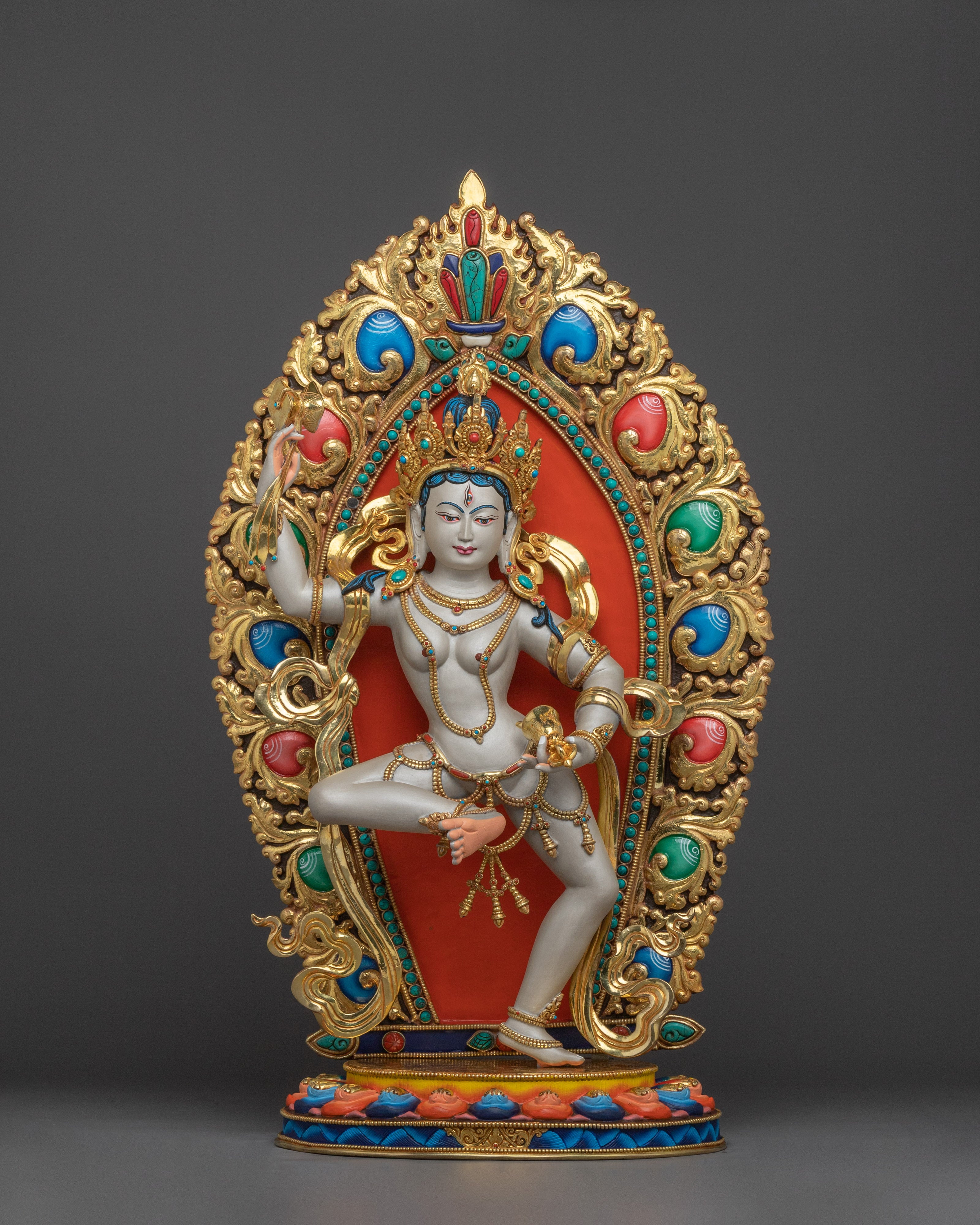Description
Tibetan Female Yogini Machig Labdrön Statue | Voice of the Dakini
Tibetan Female Yogini Machig Labdrön Statue stands at 23.2 inches (59 cm) in height, with a base width of 13.6 inches (34.5 cm), and weighs approximately 7.83 kilograms. Made from a copper body, gilded with 24K gold, and acrylic paintings that bring out the grace and depth of her expression. , and carved with deeply engraved carvings that produce a magnificent 3D-like effect Embellished with hand-carved gemstones, the statue reflects both artistic precision and spiritual reverence. Representing the revered Tibetan yogini and founder of the Chöd tradition, this sculpture captures the powerful feminine wisdom and fearlessness that Machig Labdrön embodied on her path of cutting through ego and illusion.
Machig Labdrön is typically depicted with a luminous white body, symbolizing purity, wisdom, and an enlightened state. She is shown with one face and three eyes. The third eye on her forehead represents her ability to perceive ultimate reality and transcendent wisdom. She wears five-pointed crowns, representing the transformation of the five poisons— ignorance, attachment, aversion, pride, and envy —into wisdom. Machig Labdrön is depicted in a dynamic dancing posture, with her left leg extended and her right leg raised, standing atop a lotus and a moon disc. This posture symbolizes her fearless activity and cutting through ego and delusion. She stands or sits atop a multi-colored lotus and a moon disc, surrounded by a nimbus or aureole of radiant light, indicating her enlightened nature and the purity of her realization.
Size: 23.2”/59cm (Height) x 13.6”/34.5cm (Base)
Weight: 7.83 kg
Material: 24K Gold Gilded, Acrylic Paintings, Copper Body, Handcarved Gemstones
Machig Labdrön (1055–1149/53) was a highly influential 11th-century Tibetan yogini, renowned as the founder of the Chöd practice, a unique and transformative spiritual tradition within Tibetan Buddhism. She is widely regarded as an emanation of Prajnaparamita, the embodiment of the wisdom of the Buddhas. She holds a singular place among Tibetan Buddhist masters as a female teacher who developed an independent lineage rooted in Tibetan culture rather than Indian origins.



